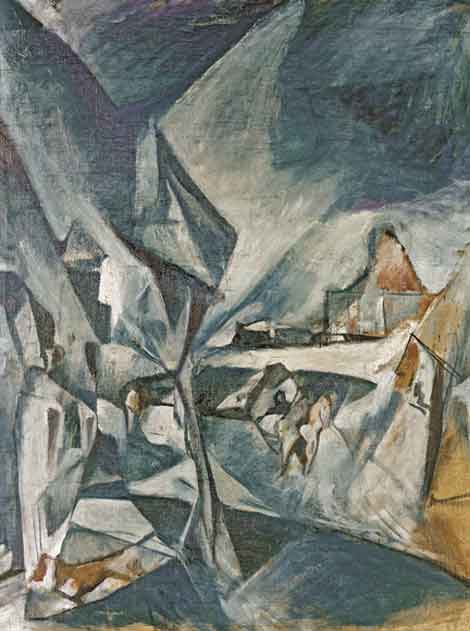Some artists make Masterpieces. Others compile Oeuvres. Still others live Lives; if they (and we) are fortunate, those Lives are lived at the center of their times, or at least their times’ artistic practices. Like most Europeans of his time, the Berlin-born Hans Richter (1888-1976) wasn’t terribly fortunate, having to endure myriad upheavals and two World Wars. But the upheavals extended to art, and Richter found himself continually at the heart of modernism. Indeed, he was a veritable Zelig of the avant-garde.
But not by accident.
Richter’s was a restless, eclectic mind, and he gravitated to all the revolutionary movements of his day. More importantly, he contributed significantly to all of them, helping to advance some, galvanize others and extend yet others into new forms. Some art and film historians criticize Richter for spreading himself too thin, even dismissing him as a consistent Johnny-come-lately who would take over others’ ideas. The historians responsible for “Encounters: Hans Richter” paint him a different way, celebrating his breadth and, especially, his friendships, exchanges and collaborations—his encounters—with other artists. “Encounters” does not pretend that Richter was the artistic equal of, say, Marcel Duchamp or Kazimir Malevich; but it does insist that he was as vital in his own way to the evolution of modern art.
Duchamp and Malevich “led” by example, while Richter was an organizer, a dialoguer, a coordinator, a teacher. He propounded modernism by working with and for his modernist cohorts, learning from some, teaching others, disseminating the ideas of yet others, and bringing the practice of still others to new contexts. Throughout his long life Richter painted, drew, sculpted and, most significantly, made films. But he also published others’ work and words, produced others’ ideas (static and filmic), arranged exhibitions, and wrote on others’ behalf. (Most famously, he penned one of the first comprehensive histories of Dada, translated into English as Dada: Art and Anti-Art, a monographic account with the immediacy of a memoir.)
Thus, it comes as no surprise to find that “Encounters” is as much about his friends’ art as Richter’s own. This is as it should be. A Richter retrospective should include everyone he knew, famous to obscure; it should document an era (or two or three), not just a man. And “Encounters” does so with gusto, conveying the excitement and volatility of 20th-century art, from Expressionism to Pop, through the eyes of someone who made sure he was there.
But “Encounters” doesn’t neglect Hans’ hands, either. His own artwork comprises less than half the show, but it suffuses throughout, its solid achievements maintaining and its devotion to new and confrontational ideas sustaining. It hangs and sits next to that of Hans Arp and Man Ray and also Werner Graeff and Otto and Adya van Rees, and argues that Bauhaus-rebel Graeff and Dutch Dadaists van Rees need re-examination and re-evaluation. Through “Encounters,” Richter still champions his peers and pals from the grave.
“Encounters” argues that lesser figures are not negligible figures, and at the same time that figures like Richter aren’t “lesser” for their eclecticism. On Richter’s own behalf, the show argues for his prime importance as a filmmaker—that his films comprise his most significant contribution as an artist. They, too, touch on many modernisms, including Constructivism and Surrealism, and freely engage the innovations, and often the contributions, of others. Richter gathered early that film was a collaborative art, even working with and supporting the brilliant Swedish filmmaker Viking Eggeling on several animations at a time when abstract artists regarded film as a medium no less solitary than painting.
“Encounters” runs through not just Richter’s complete surviving filmography, shown (complete or excerpted) throughout the exhibit, but what seems the complete films of everyone he knew, from Sergei Eisenstein to Robert Flaherty. The many screens and projection areas nearly overwhelmed the static work in the Los Angeles installation, an otherwise brilliant neo-modernist design by Frederick Fisher and Partners that allowed curator Timothy Benson to alight upon Richter’s career time and again as the career of modernism itself—not just modernism’s movements, but its media and its means of distribution (photography, architecture, published periodicals, multiple editions)—without losing sight of who Richter was and what he himself did. The exhibition moves on to European venues (the Centre Pompidou Metz in the fall, Berlin’s Martin-Gropius-Bau in spring 2014), where the cascade of unknown names will seem less daunting, but the thrill of the roller-coaster ride through the modernist epoch need not diminish.



